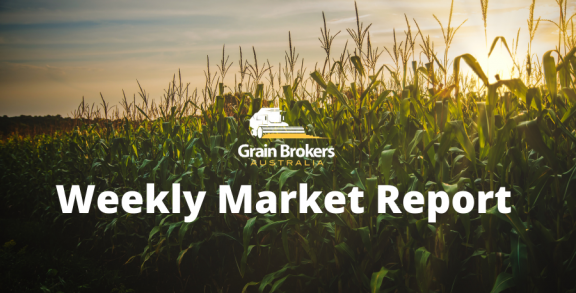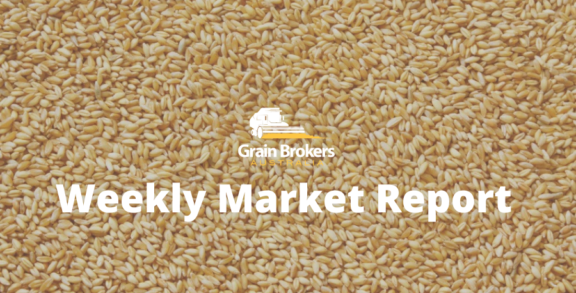
South African corn farmers are cashing in on heightened global demand, substantially increasing exports on the back of their second consecutive bumper harvest. The crop had an excellent start with widespread rains in October and November 2020, facilitating a timely plant and then favourable late-season weather conditions boosted final yields.
Harvest in the east of the country has been underway for some weeks, with the later western areas about to move into full gear. Dryness across much of the country in late May has benefited harvest progress and crop quality. All going well, headers will all be parked up by the end of June.
South Africa’s Crop Estimates Committee (CEC) is forecasting production at 16.18 million metric tonnes (MMT), up 5.8 per cent from the 15.3MMT harvested last season. The updated estimate is marginally higher than the CEC’s April forecast of 16.095MMT and was at the low end of industry expectations. It will be the second biggest commercial corn crop on record behind the 17.55MMT produced in the 2016/17 season, relegating last year’s crop to third place.
The total area planted to commercial corn in 2020 was 2.755 million hectares, around 5 per cent higher than the 2019 program. At planting time last year, domestic corn prices in South Africa were trading around 30 per cent higher than they were in late 2019, providing growers with an attractive incentive to increase plantings year on year.
Corn prices decreased moderately between January and April this year, primarily driven by the favourable domestic supply conditions. The downward pressure more than outweighed the effects of the high international prices and a weakening of the national currency.
Around 61.4 per cent, or 1.692 million hectares (Mha), was planted to white corn, and 38.6 per cent, or 1.063Mha, planted to yellow corn. With an average yield of 5.31 metric tonne per hectare (MT/ha), white corn production is expected to be 8.982MMT, or 55.5 per cent of the total crop. The average yellow corn yield is higher at 6.77MT/ha, with output at 7.198MMT, or 44.5 per cent of total output. If realised, it would be the largest ever yellow corn crop.
Non-commercial, or subsistence, corn production is forecast at almost 587,000 metric tonne, up 7.9 per cent from just under 544,000 metric tonne last season. The area is also up sharply to more than 319,000 hectares, 7.4 per cent higher than the 297,000 hectares planted in 2019. Corn produced by subsistence farmers is generally consumed by humans or animals on the producing farm and doesn’t make its way into the domestic or export supply chain.
Like so many countries globally, the COVID-19 pandemic has hit the South African economy very hard. Economic growth has been on a downward trend for the past ten years. With unemployment above 30 per cent and the COVID-19 challenges, it is expected to remain sluggish for the foreseeable future.
Consumption of corn in South Africa has increased by an average of more than two per cent per annum over the past ten years, powered by an increase in demand from both the human consumption and animal feed sectors. Domestic demand in the 2021/22 marketing year (May ‘21 to April ‘22) is expected to be around 11.7MMT, with white corn at 6.45MMT (55 per cent) and yellow corn at 5.25MMT (45 per cent).
In the form of a meal known as mielie or maize pap, white corn is the staple food for many South African consumers, especially for lower-income households, as it is a relatively inexpensive source of carbohydrates. The grain is mixed with water until a smooth, porridge-like consistency is achieved. It can be enjoyed for breakfast as a smooth, sweet porridge or made firmer for lunch and dinner and served with vegetables or meat.
On the other hand, yellow corn is the primary ingredient for stockfeed rations, particularly in the poultry sector. Intake of chicken meat has increased substantially as it is the cheapest, and now the most important, source of protein in the South African diet. Higher chicken meat demand has driven considerable expansion in the local broiler industry in recent years, manifesting itself in burgeoning domestic demand for yellow corn.
The jump in domestic production and relative competitiveness on the international stage is expected to see South Africa’s corn exports surge by 40 per cent to 3.5MMT in the 2021/22 marketing year. That follows a 72 per cent increase to 2.5MMT in the marketing year just concluded. High international prices have helped push domestic values above export parity, increasing the incentive to export the country’s production surplus.
South Africa is well placed to supply neighbours in the Southern Africa region. Zimbabwe, Botswana, Namibia, Mozambique and Eswatini all share a border with South Africa and are established destinations. However, they are also expected to have above-average production this year, thereby reducing imports.
Consequently, deep-sea exports to traditional Asian buyers such as South Korea, Taiwan, Japan and Vietnam, and possibly some Mediterranean destinations, are expected to figure more prominently in export bookings ahead of the northern hemisphere harvest later this year.
Call your local Grain Brokers Australia representative on 1300 946 544 to discuss your grain marketing needs.





